The Beauty of Yellow Cockatiel Captured in High-Resolution Photography
Experience the stunning beauty of Yellow Cockatiels as never before, through the lens of high-resolution photography. Each feather, each hue, captured in exquisite detail.
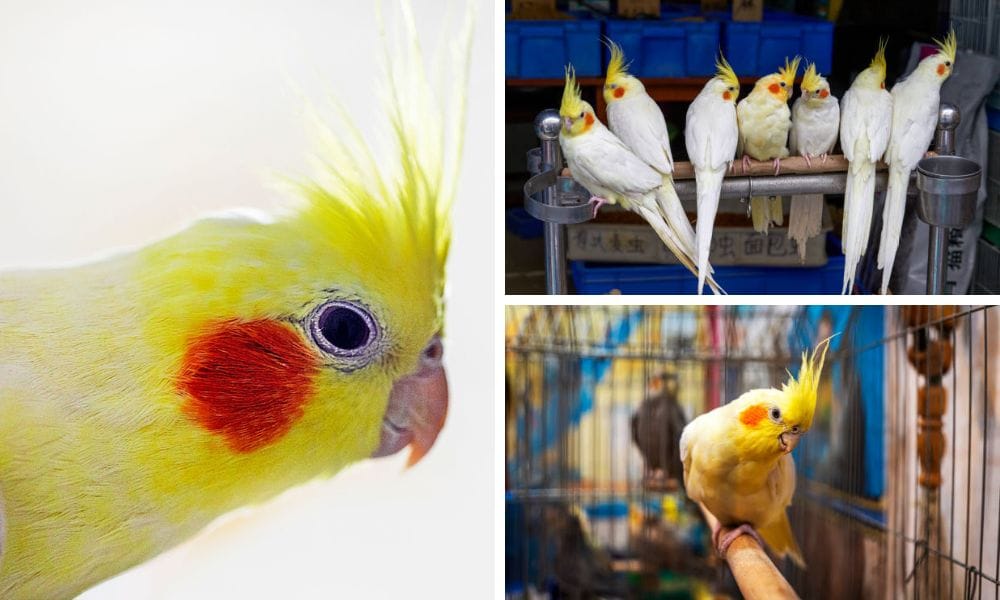
Key Takeaways:
- Discover the stunning visual appeal of yellow cockatiels through high-resolution imagery.
- Learn about the various mutations, including the second cockatiel mutation that brings out their vibrant colors.
- Understand the differences between male and female cockatiels and their unique characteristics.
Yellow cockatiels, with their bright yellow feathers and charming personalities, have captivated bird enthusiasts and photographers alike. These beautiful birds, belonging to the cockatoo family, exhibit a range of yellow shades, from the soft yellowish tint of the cinnamon cockatiel to the vibrant yellow crest of the lutino cockatiel. High-resolution photography has the power to showcase these nuances in breathtaking detail, allowing us to appreciate the intricate beauty of these avian wonders.
The Lutino Cockatiel: A Splash of Sunshine
The lutino cockatiel is one of the most adored color mutations within the aviculture world. This gorgeous lutino cockatiel mutation results in a bird with white to light yellow plumage and often, red eyes. The lutino gene removes the gray pigmentation, leaving the yellow and orange colors to shine through, especially on the head and the bright orange cheek patches. High-resolution images capture the lutino's radiant glow, highlighting the contrast between the white plumage and the vivid yellow and orange hues.
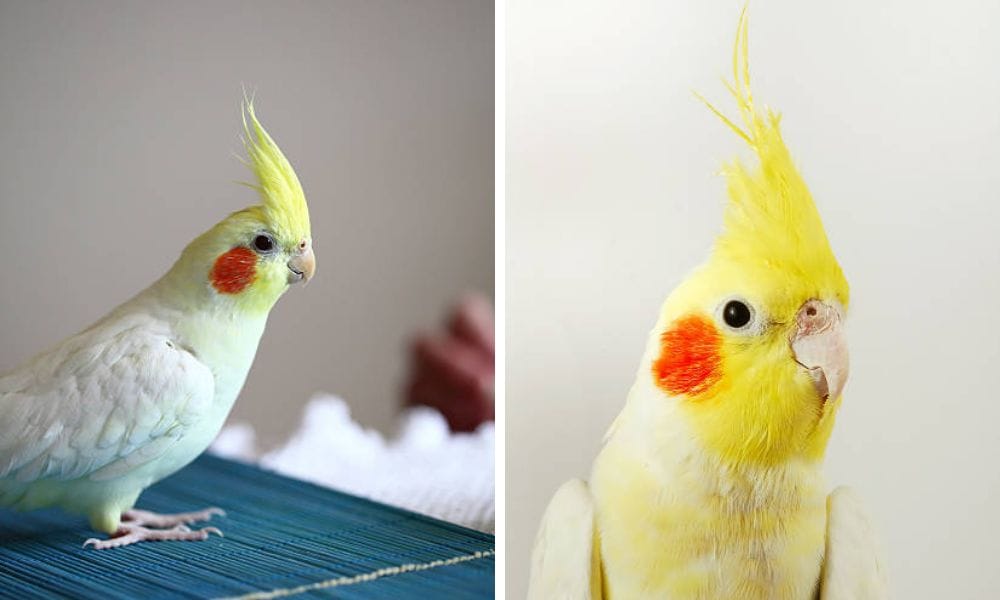
Male vs. Female: Distinguishing Features
When it comes to male and female cockatiels, there are distinct differences in their appearance. Male lutino cockatiels typically have a brighter yellow face and more prominent white flashes in their tail feathers. In contrast, female pearl cockatiel often displays a more muted color palette with patterns across their feathers. High-resolution photography can help identify these differences, as the finer details of the facial feathers covering and the subtle variations in the yellow head and tail feathers become crystal clear.
The Second Cockatiel Mutation: Cinnamon Twist
The cinnamon cockatiel, known for its warm, light brown or light grey coloring, represents the second cockatiel mutation. This mutation affects the darkness of the feathers, giving them a cinnamon hue instead of the normal grey cockatiel color. The wings and tail feathers of the cinnamon cockatiel have a softer appearance, with the outer edges often displaying a yellowish tint. Capturing these birds in high-resolution allows for a detailed look at the delicate gradations of color that make the cinnamon cockatiel a standout in the animal world.
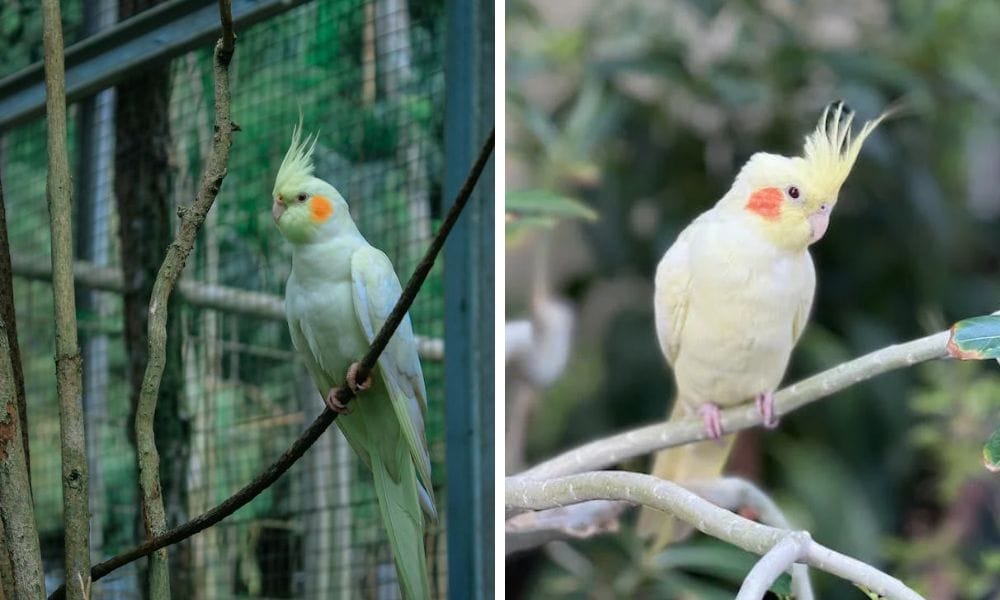
The Pied Mutation: A Mosaic of Colors
Pied cockatiels are another popular mutation, characterized by their irregular patches of color. The pied mutation can result in a bird with a mix of yellow, white, and grey feathers, creating a unique pattern that varies from one individual to another. High-resolution photos of pied cockatiels reveal the intricate patterns and the interplay of colors, including the bright yellow feathers and the light yellow body, against the backdrop of white and grey.
The Pearl Pied: A Tapestry of Texture
The pearl pied cockatiel combines the pearl and pied mutations, resulting in a bird with a speckled appearance. The feathers of a female pearl cockatiel are adorned with a pearl-like pattern, which can be more pronounced in females than in males. Through high-resolution imagery, the delicate patterns on the wings and the long tails of these birds are showcased in stunning clarity, emphasizing the beauty of this breed.
The Lutino Pearl: A Rare Gem
The lutino pearl cockatiel is a rare and exquisite variant that merges the lutino and pearl mutations. This bird displays a light yellow body with the pearl pattern superimposed, creating a breathtaking visual effect. Photographs taken with high-resolution cameras can capture the subtle interplay of light and shadow on the lutino pearl's feathers, making it a highly sought-after subject for both bird lovers and photographers.
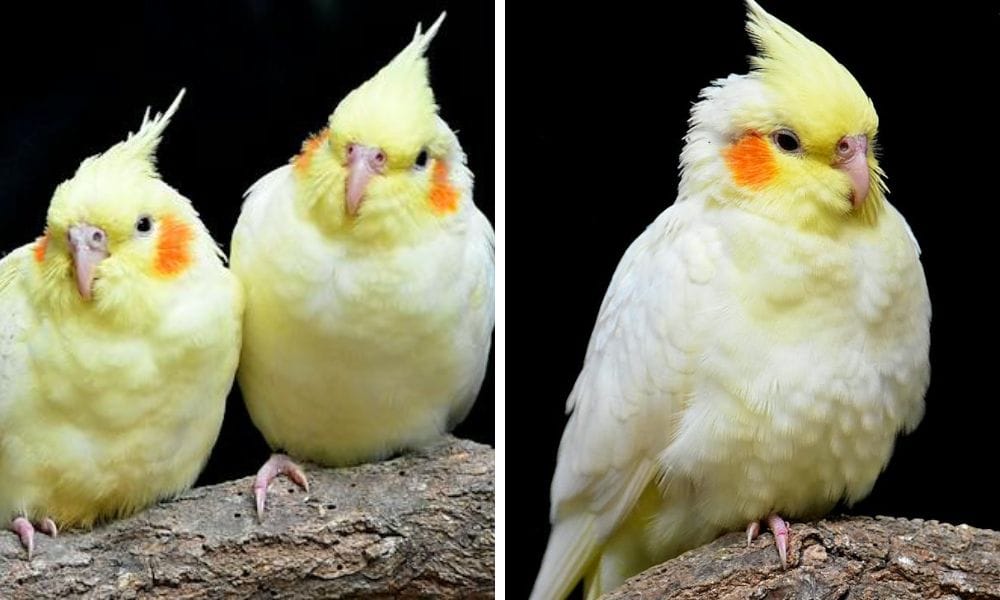
Capturing the Essence of the Orange Cheek Patch
The vibrant orange cheek patch is one of the most striking features of a cockatiel. This splash of color adds a unique charm to their appearance, setting them apart from other members of the parrot family. Photographers find these patches to be a captivating subject, as they contrast beautifully against the cockatiel's plumage, especially when captured in natural lighting. The intensity of the orange can vary among individuals, providing a delightful challenge for photographers aiming to showcase the nuances in their high-resolution images.
In the wild type, the orange cheek patch serves more than just an aesthetic purpose. It plays a significant role in communication and mate selection among cockatiels. When domesticated, these patches remain a prominent feature, often indicating the health and vitality of the bird. Enthusiasts and potential pet owners are drawn to these vivid markings, making the cockatiel with its distinctive cheek patches a beautiful pet bird that's both a joy to observe and photograph.
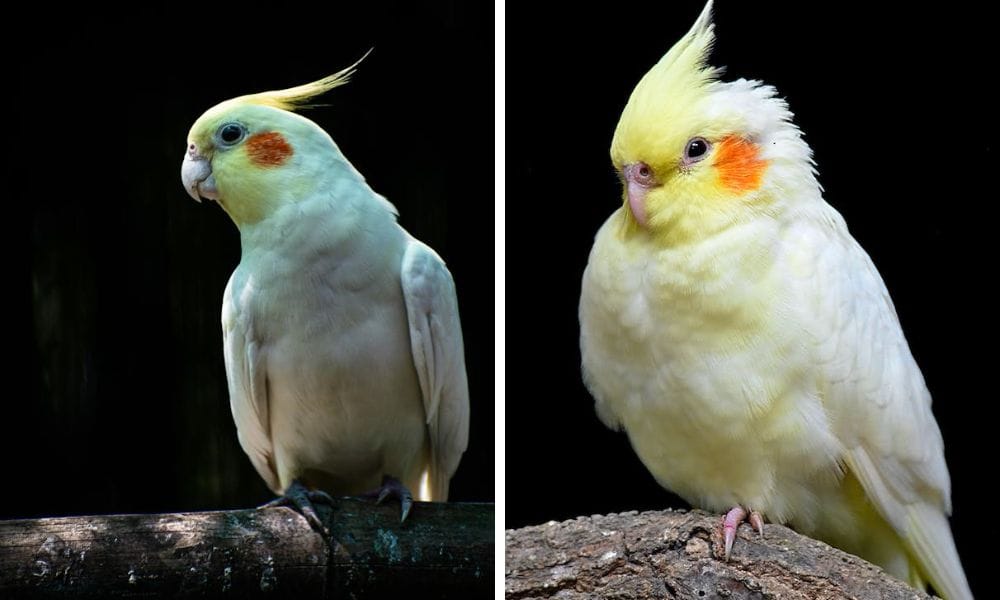
The Vocal Abilities of the Male Cockatiel
The male cockatiel is not only visually appealing with its primarily grey body and vibrant yellow head but is also known for its vocal prowess. Unlike other birds, male cockatiels have the ability to mimic sounds and even learn to talk. Cockatiels are social creatures, and this ability to vocalize is an essential part of their interaction with both their human companions and other cockatiels. High-resolution photography can capture the moment these beautiful pet birds engage in their singing or calling, providing a glimpse into their communicative behaviors.
While not all male cockatiels will talk, those that do can provide endless entertainment and companionship. Their attempts at mimicking human speech or household sounds can be quite endearing and are a testament to their intelligence. Capturing these moments in photographs can be as rewarding as recording their vocalizations, as it freezes a moment of the bird's personality and charm. The male cockatiel's ability to engage with humans through sound makes it a standout in the parrot family and a favorite among bird enthusiasts.
The Yellow Face: A Distinctive Mark
Cockatiels with a yellow face are particularly striking, as their bright yellow feathers stand out against the white or grey plumage. The yellow face mutation adds an extra layer of vibrancy to the cockatiel's plumage, and when captured in high-resolution, the depth and intensity of the yellow crest and facial feathers are truly mesmerizing.
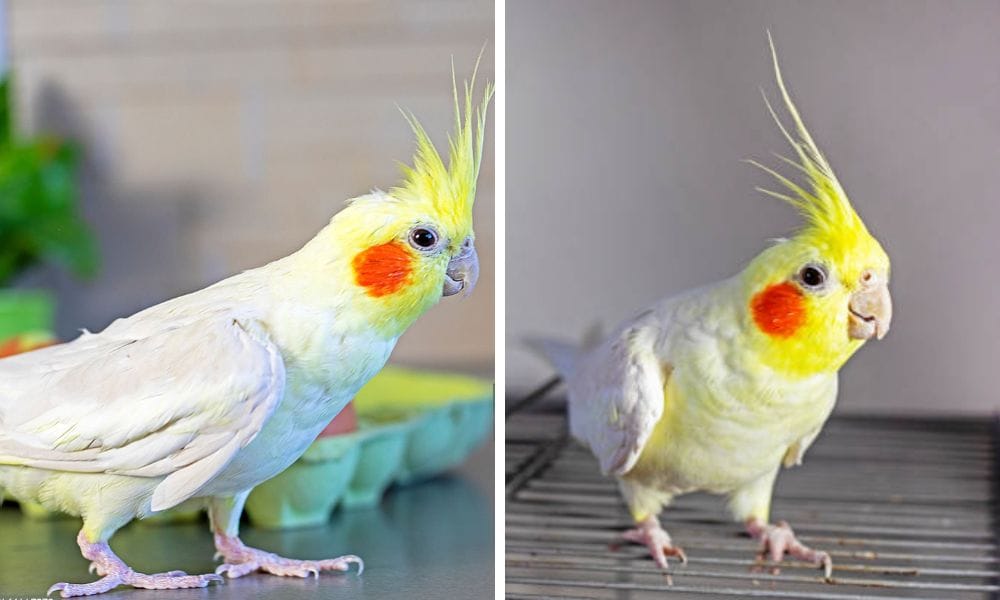
The Lutino Pied: A Combination of Brilliance
The lutino pied cockatiel is a combination of the lutino and pied mutations, resulting in a bird with a predominantly yellow or light yellow body with random patches of white and grey. High-resolution photos of the lutino pied showcase the contrast between the bright yellow feathers and the rest of the plumage, highlighting the bird's unique and captivating appearance.
The Albino Cockatiel: A Study in Contrast
Albino cockatiels, while not yellow, are worth mentioning for their stark white plumage and red eyes. They lack any pigmentation, which gives them their distinctive look. High-resolution photography can capture the purity of the albino's white feathers and the striking contrast with their dark eyes, providing a different perspective on the beauty of cockatiels.
The Florida Parrot Jungle: A Photographer's Paradise
The Florida Parrot Jungle is renowned for its diverse collection of cockatiels, including many of the mutations discussed. Cockatiels are found largely in arid or semi-arid areas of Australia, yet they are always located near water sources. It was here that Cliff Barringer, a pioneer in cockatiel breeding, developed some of the first color mutations. Photographers flock to this location to capture the beauty of these birds, with the lush backdrop providing a natural setting that enhances the visual appeal of the cockatiels’ bright yellow feathers and orange cheeks.

Personality and Behavior: Understanding the Yellow Cockatiel
Also known as the lutino cockatiel, is a delightful species that brings joy to any household. These birds are highly social creatures, thriving on interaction with their owners and other birds. Their social nature means they form strong bonds, making them wonderful companions who love to be part of the family.
Intelligence and curiosity are hallmarks of the yellow cockatiel. These birds are always eager to explore their surroundings, and they require plenty of toys and stimulation to keep their minds active. Their inquisitive nature makes them a joy to watch as they investigate new objects and environments.
Affectionate and loving, yellow cockatiels are known for their cuddly demeanor. They enjoy being close to their owners, often seeking out attention and interaction. This affectionate behavior makes them endearing pets who are always ready to share a moment of closeness.
Vocal abilities are another fascinating aspect of the cockatiel. While they are relatively quiet compared to other parrots, they are capable of mimicking human speech and various sounds. Their vocalizations are a form of communication, adding another layer to their engaging personalities. Whether they are chirping a greeting or mimicking a household sound, their vocal talents are sure to bring a smile to your face.
Care and Nutrition: Ensuring a Healthy Lifestyle
Ensuring a healthy lifestyle for your yellow cockatiel involves providing a balanced diet and proper care. A well-rounded diet is crucial, consisting of a mix of seeds, pellets, and fresh fruits and vegetables. High-quality commercial cockatiel feed should form the staple of their diet, supplemented with fresh foods daily to provide essential nutrients.
Fresh water is another vital component of their care. Always ensure that your cockatiel has access to clean water, changing it daily to prevent the growth of bacteria and keep your bird hydrated.
The size of the cage is also important for the well-being of your yellow cockatiel. A spacious cage allows for ample movement and exercise, with a minimum recommended size of 20 inches wide, 20 inches deep, and 24 inches tall. This space enables your bird to stretch its wings and stay active.
Exercise is essential for maintaining the health and happiness of your yellow cockatiel. Provide plenty of toys and opportunities for flight and play outside of their cage. This not only keeps them physically fit but also mentally stimulated, preventing boredom and promoting overall well-being.
Photography Tips: Capturing the Perfect Shot
Capturing the perfect shot of your yellow cockatiel can be a rewarding experience, allowing you to showcase their beauty and personality. Here are some tips to help you get started:
Using natural light is always the best option when photographing birds. Natural light enhances the vibrant colors of your yellow cockatiel’s plumage, making them look their best. Try to take photos near a window or outside in the shade to avoid harsh shadows and achieve a soft, even light.
A fast shutter speed is essential for capturing the quick movements of yellow cockatiels. These birds are fast and agile, so a minimum shutter speed of 1/1000th of a second is recommended to freeze their motion and capture sharp images.
Getting up close is key to capturing the intricate details of your yellow cockatiel. Use a macro lens or a telephoto lens to get close-up shots that highlight their features, such as the vibrant yellow feathers and the expressive eyes.
Patience is crucial when photographing birds. Capturing the perfect shot requires time and practice. Take plenty of photos and experiment with different angles and lighting setups. With patience and persistence, you’ll be able to capture stunning images that showcase the beauty of your yellow cockatiel.
By following these tips, you can create beautiful, high-resolution photographs that highlight the unique charm and elegance of your yellow cockatiel.
The Role of the Nest Box in Cockatiel Breeding
For those interested in breeding cockatiels, the nest box is an essential component. It provides a safe and comfortable environment for cockatiels to lay their eggs and raise their young. High-resolution photography can document the breeding process, from the eggs in the nest box to the fledglings taking their first flight, offering an intimate look at the life cycle of these beautiful pet birds.
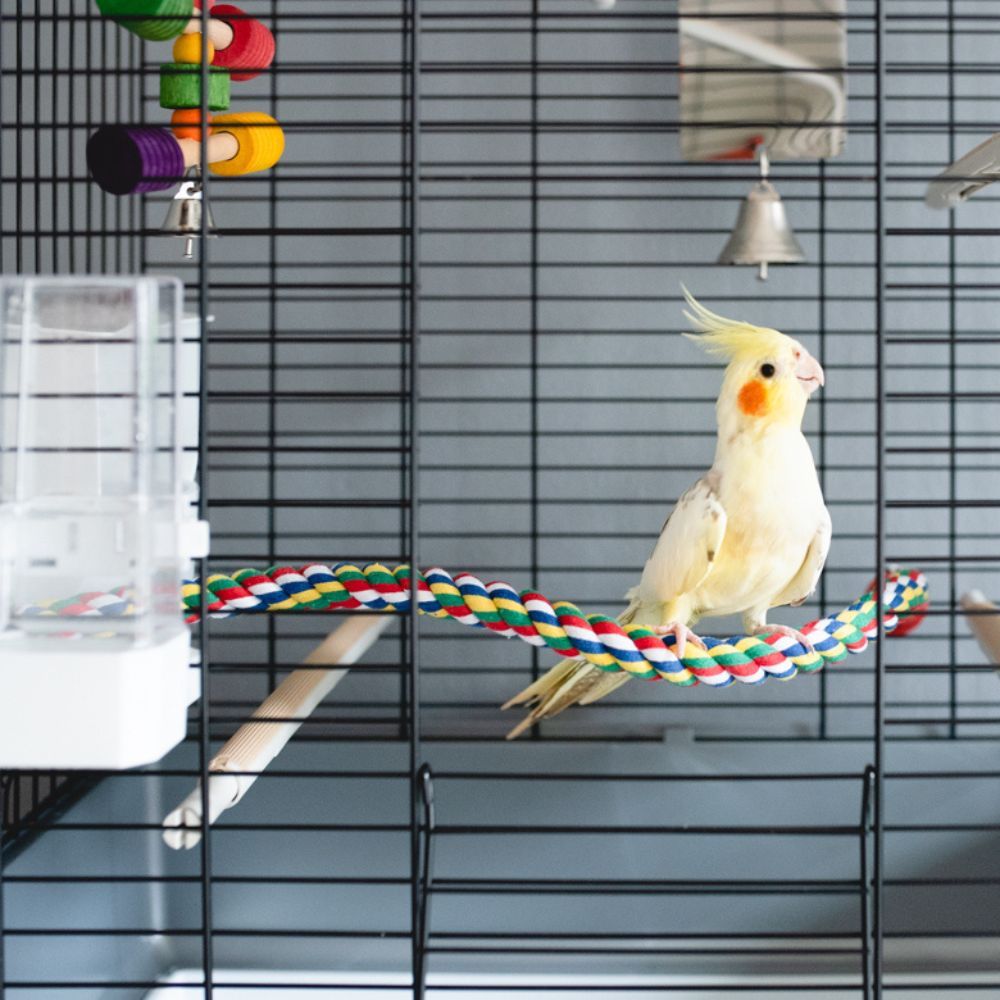
The Importance of a Proper Bird Cage
A proper bird cage is crucial for the health and well-being of cockatiels. It should be spacious enough to allow for flight and equipped with perches, toys, and feeding stations. High-resolution images of cockatiels in their cages can help potential pet owners understand the space and amenities required to keep these birds happy and healthy.

Summary
Yellow cockatiels are a marvel of the aviculture world, with their diverse range of color mutations and charming personalities. High-resolution photography brings out the best in these birds, capturing the nuances of their plumage and the vibrancy of their colors. From the lutino to the pied, each mutation offers a unique beauty that can be appreciated in stunning detail through the lens of a camera. Whether you're a bird enthusiast, a photographer, or simply someone who appreciates the beauty of nature, yellow cockatiels provide endless opportunities for admiration and inspiration.
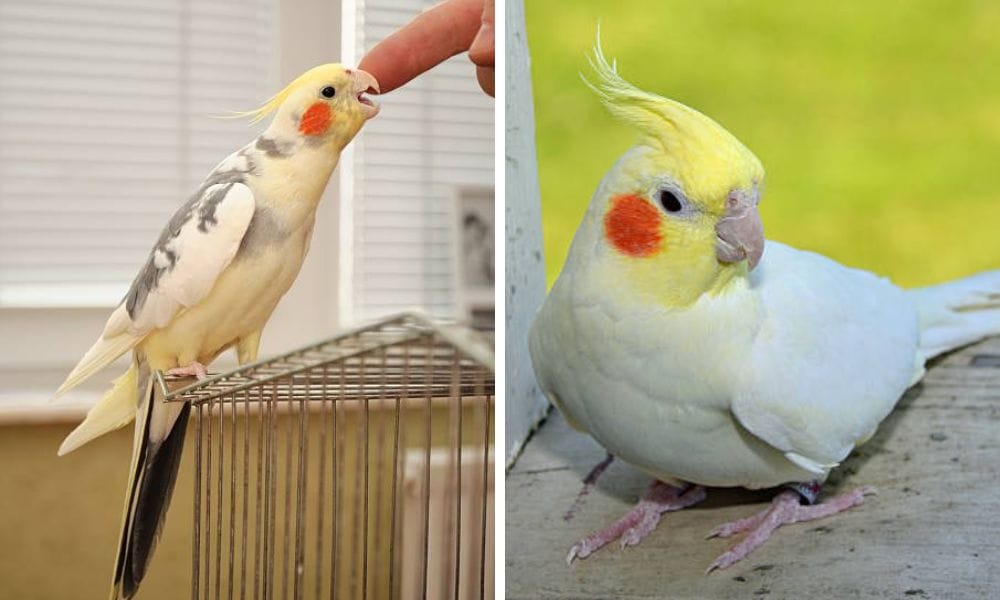
FAQ Section
Q: What is the main difference between male and female cockatiels? A: Male cockatiels generally have brighter colors and more distinct markings than females. For example, male lutino cockatiels often have a more vibrant yellow face and prominent white flashes in their tail feathers, while female pearl cockatiels may have a more muted color palette with patterns across their feathers.
Q: Can cockatiels from different mutations be bred together? A: Yes, cockatiels from different mutations can be bred together, which can result in offspring with a combination of traits from both parents. This is how new mutations like the lutino pied and lutino pearl are created.
Q: How can high-resolution photography enhance our understanding of cockatiels? A: High-resolution photography can capture the intricate details of cockatiels' feathers, colors, and patterns that might not be visible to the naked eye. This level of detail can help bird enthusiasts and breeders identify specific mutations, understand the physical differences between males and females, and appreciate the subtle beauty of these birds.

